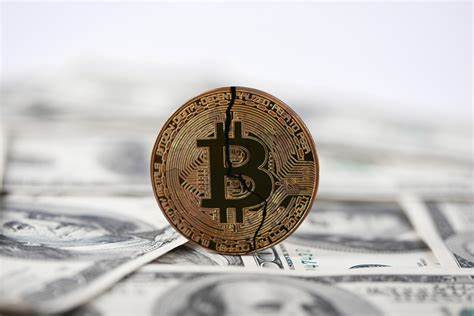近日,美国政府向知名加密货币交易平台Coinbase Prime转账了3940枚比特币,交易金额约为2.41亿美元人民币。此操作首次由区块链分析机构Arkham Intelligence公开,迅速成为全球加密货币圈子的焦点。鉴于比特币作为全球市值最高的数字资产之一,每一次政府大规模交易都可能在市场掀起波澜,因此这一重磅消息引发了业界和投资者的诸多讨论。此次转移的比特币原本是源自美国司法机关对犯罪活动的没收资产。具体来说,这批资产与一名名为Banmeet Singh的毒品贩运犯有关。Singh于2019年在伦敦被逮捕,2023年被引渡回美国并被判有罪。
作为判决的一部分,他不得不上交8100枚比特币,约合当时价值1.5亿美元。这些被没收的比特币如今成为美国政府持有的庞大比特币储备的一部分。目前,美国政府共持有约214000枚比特币,市值超过130亿美元,稳居世界最大国家级比特币持有者的位置。大部分比特币来源于对暗网市场Silk Road和2016年Bitfinex黑客事件的查封。转账到Coinbase Prime的操作被普遍解读为美国政府可能准备出售部分比特币储备的信号。Coinbase Prime是专门为机构投资者设计的交易平台,能够处理大额资产和复杂交易,符合政府进行资产管理和处置的需要。
近来,德国政府的一次大规模比特币出售曾引发市场短暂调整,因此投资者对美国政府的这一举动表示一定程度的担忧,担心大规模抛售可能引发价格波动。然而,值得注意的是,尽管3940枚比特币数额巨大,但相较于全球比特币的日均交易量而言,仍属于相对较小的规模。这也表明美国政府尚未全面清空其储备,而是采用战略性分批处理的方法。分析人士认为,美国政府此次操作背后隐藏着复杂的政策考量。一方面,政府需展现对非法资产的严格打击力度,加强数字资产合规监管,提升公众及投资者信心。另一方面,折价或分步出售有助于避免市场大幅波动,保护比特币作为新兴投资工具的健康发展。
此次事件也再次凸显了数字资产在全球金融监管体系中的重要性和挑战。随着比特币等数字货币广泛应用于各种经济活动,政府如何平衡监管与创新,如何管理没收资产和优化市场表现,成为未来亟需解决的问题。美国政府作为全球金融强国的代表之一,本次转账不仅展现了其对数字资产的策略调整,也可能对国际数字货币政策产生示范效应。Coinbase作为美国最大的加密货币交易平台,得益于政策支持和市场需求,平台机构业务不断扩张,此次获得政府委托管理大额资产无疑提升了其行业信誉。此外,越来越多机构投资者开始关注数字资产市场的安全性和合规性,政府与主流交易平台的合作必将推动行业规范发展,促进国际资本流入。综合来看,美国政府此次向Coinbase Prime转移3940枚比特币,虽然引发短期市场关注,但更深远的意义在于促进数字资产的合规流通和风险管理。
未来,随着监管制度完善和技术进步,政府对加密资产的管理将更加透明和高效。投资者应密切关注政策动态和市场趋势,合理调整资产配置,应对潜在波动。比特币作为去中心化加密货币的代表,其价值不仅体现在价格波动,更在于推动数字金融革命和构建新型经济体系的潜力。美国 government's strategic movement of seized bitcoin assets reflects growing recognition of digital currencies in mainstream finance. This move reinforces ongoing conversations about cryptocurrency's role in national security, law enforcement asset recovery, and regulatory oversight. Moreover, it underscores the need for robust infrastructure that balances transparency and liquidity with regulatory compliance. While some market participants fear potential price impacts from such government sales, the phased and measured approach signal prudent management aimed at safeguarding market stability. As the largest Bitcoin holder, the U.S. government’s involvement also stimulates crypto adoption among institutional investors, who often look to regulatory clarity and governmental actions as validation of asset legitimacy. Concurrently, the case of Banmeet Singh highlights the persistent intersection of illicit activities and cryptocurrencies, emphasizing the importance of blockchain analytics and law enforcement collaboration in tracing and reclaiming criminal proceeds. This ongoing dynamic continues to shape the regulatory landscape and informs policymakers worldwide about the complexities of digital asset governance. Looking ahead, the evolution of government-held cryptocurrency portfolios will likely influence market trends and regulatory frameworks globally. Enhanced cooperation between public authorities and private sector platforms like Coinbase offers promising pathways to streamline asset disposition and ensure compliance while fostering innovation. Ultimately, the integration of seized cryptocurrencies into regulated markets marks a significant step in the maturation of the crypto ecosystem, aligning with broader financial system modernization priorities. For investors and observers, understanding these developments is crucial to navigate the opportunities and risks inherent in this rapidly evolving domain. In summary, the U.S. government's transfer of millions in Bitcoin to Coinbase Prime reflects a multifaceted strategy combining law enforcement success, strategic asset management, and regulatory positioning. This event invites deeper consideration of how sovereign entities engage with digital assets, the implications for market health, and the ongoing transformation of global finance driven by blockchain technology and crypto adoption.。










